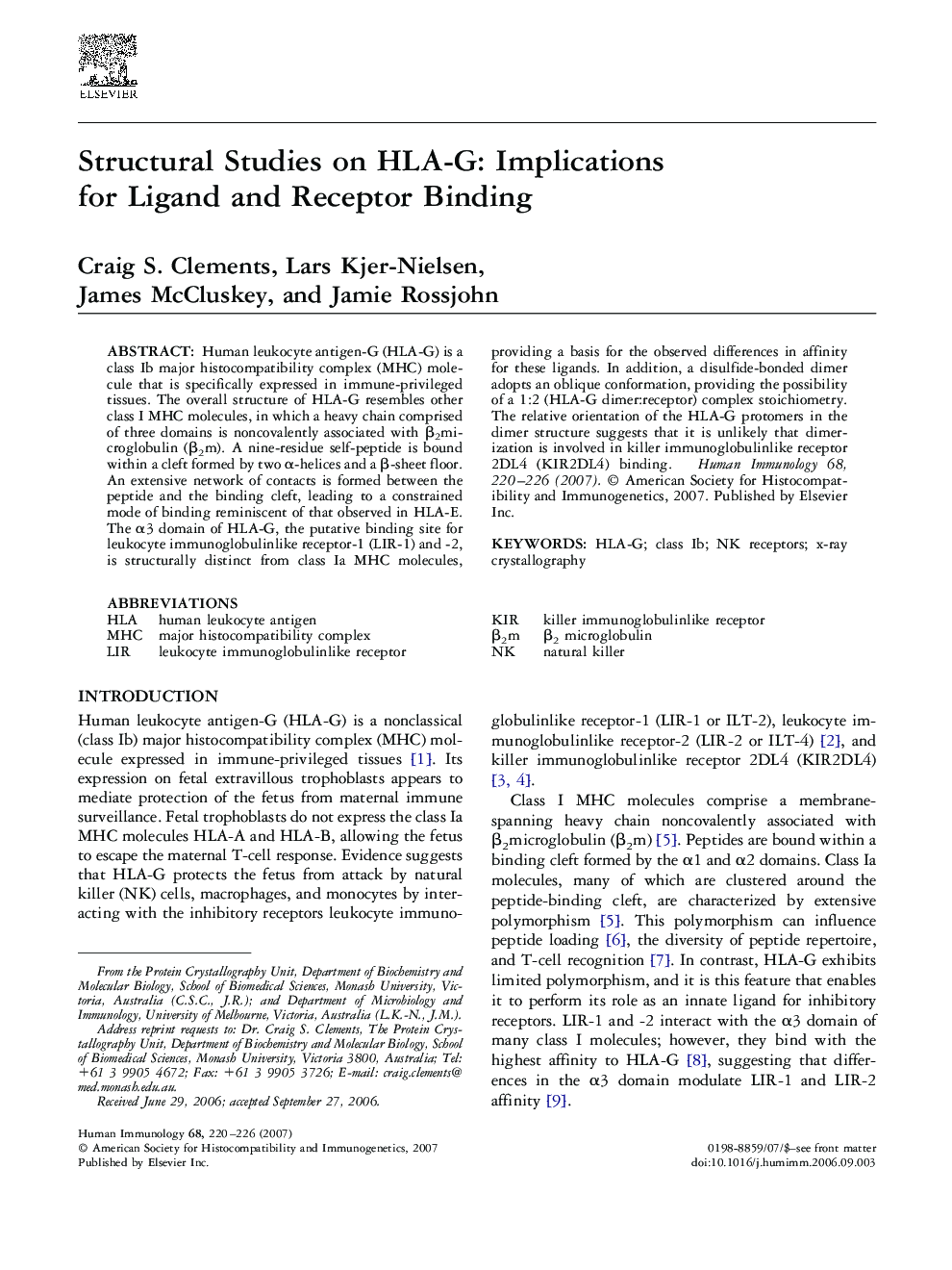| Article ID | Journal | Published Year | Pages | File Type |
|---|---|---|---|---|
| 3352384 | Human Immunology | 2007 | 7 Pages |
Human leukocyte antigen-G (HLA-G) is a class Ib major histocompatibility complex (MHC) molecule that is specifically expressed in immune-privileged tissues. The overall structure of HLA-G resembles other class I MHC molecules, in which a heavy chain comprised of three domains is noncovalently associated with β2microglobulin (β2m). A nine-residue self-peptide is bound within a cleft formed by two α-helices and a β-sheet floor. An extensive network of contacts is formed between the peptide and the binding cleft, leading to a constrained mode of binding reminiscent of that observed in HLA-E. The α3 domain of HLA-G, the putative binding site for leukocyte immunoglobulinlike receptor-1 (LIR-1) and -2, is structurally distinct from class Ia MHC molecules, providing a basis for the observed differences in affinity for these ligands. In addition, a disulfide-bonded dimer adopts an oblique conformation, providing the possibility of a 1:2 (HLA-G dimer:receptor) complex stoichiometry. The relative orientation of the HLA-G protomers in the dimer structure suggests that it is unlikely that dimerization is involved in killer immunoglobulinlike receptor 2DL4 (KIR2DL4) binding.
